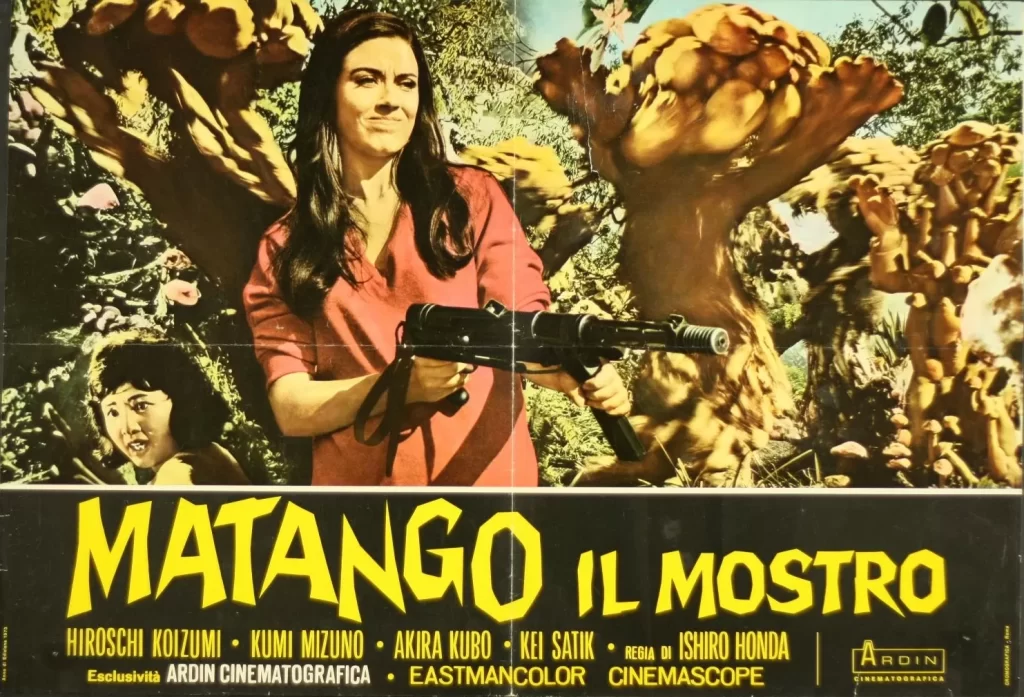Blockbusters hold a time-honored position in Hollywood: the films studios bust out when they’re feeling threatened,the type of movie so epic, so over the top, that it just has to be seen in theaters. Massive set pieces, casts of thousands, astronomical budgets — the cinematic definition of the expression, “spending money to make money.” But these films didn’t just appear when studios felt the need to compete with the siren call of television in the 1950s or Netflix in the 2000s: they have a rich tradition that dates back to very early cinema.
Cecil B. DeMille is the rare director who was around long enough to have seen Hollywood from the initial wave of epic filmmaking during the late 1910s and 1920s at the beginning of his career to the biblical blockbusters of the 1950s at its end. And although he rarely gets much credit as a great artist, he is one of the key figures responsible for making film not just a medium for entertainment, but a grand spectacle.
Cecil B. DeMille began his directorial career in 1914 with The Squaw Man, a silent western about an Englishman who falls in love with and marries an American Indian woman. (It was a story he would revisit more than once, directing remakes in 1918 and 1931.) Although a substantial portion of his silent film career was spent making westerns, traditionally a genre that could be made on a low budget, as well as small-scale, intimate romance films such as For Better, For Worse (1919) and Saturday Night (1922), he would quickly become known for his penchant for the extravagant.
During the 1920s, he transitioned to historical epics, which would allow him to recreate the lavish opulence of the Roman era, as well as bring to life painstakingly executed interpretations of biblical events. In terms of the scale of his productions, he would often be compared to D.W. Griffith, whose work on films like Intolerance and Orphans of the Storm was similarly larger-than-life. DeMille possessed a unique ability to maintain complete control on-set, even when dealing with casts of extras that numbered in the thousands. His leadership abilities often took a turn for the autocratic, however: he was known for being a bit of a bully while in the director’s chair, criticizing and humiliating actors who were hesitant to perform their own stunts. (And they may have had good reason to be fearful: when DeMille filmed Unconquered in 1947, he developed a set piece including fireballs and flaming arrows that resulted in multiple injuries, requiring thirty extras to be hospitalized.)
Despite any personal shortcomings, his achievements were legion. He was responsible for boosting (if not launching) the careers of many movie stars, including Gloria Swanson (who, in her role as Norma Desmond, would pay homage to him in Sunset Boulevard), Claudette Colbert, and Charlton Heston. DeMille was fascinated by the technical side of filmmaking, always looking for innovative ways to capture a sense of grandeur. He was, for example, instrumental in the development of the boom mic and the camera crane, using both in several of his early blockbusters. He even invented a soundproof camera blimp in order to get the specific type of shot he was looking for.

Cecil B. DeMille could almost always be counted on to make a movie a hit. He knew intuitively how to produce films that grabbed the attention of the audience, overawing them with pageantry. A studio could be confident that more likely than not, if they gave him a big budget, they would see a return on their investment. When he made The Ten Commandments in 1923, it broke Paramount’s box office record and held that title for a quarter of a century. When he remade The Ten Commandments in 1956, it was reported to be the most expensive film ever produced, and adjusted for inflation, it is the eighth highest grossing film of all time. Samson and Delilah in 1949 was the highest-grossing film of the year, as was The Greatest Show On Earth in 1952. He had no shortage of industry acclaim, either: over the course of his career, DeMille’s films were nominated for 37 Academy Awards, and won eight times. He never won for Best Director (and was only nominated once), but he was awarded an honorary Oscar for his contributions to the film industry in 1950.
Although his work was inventive and even groundbreaking in some ways, it took a long time for critics to consider him amongst the most influential directors of the first half of the twentieth century, and that’s because of one reason more than any other: the fact that his films were popular. Critics in the 1940s and 1950s were having the same conversations that happen on Twitter whenever anyone begins to talk about the merits of Marvel films (which are, in many ways, a clear successor to Cecil B. DeMille’s style of aggressive excess.) Like most directors who make a career out of pleasing the masses with blockbusters, there’s an open-ended question to his legacy: were his films mere empty cinematic calories, or were they art?
A case can be made for Cecil B. DeMille, the artist, based solely on the sheer ambition of his two versions of The Ten Commandments, each telling the story of Moses, adopted son of the Egyptian pharaoh, discovering his Hebrew heritage and leading his people on an exodus through the Red Sea. How could we not see the artistic merit in a film that fills each frame so purposefully, giving dramatic set pieces a sense of depth that makes them feel almost three-dimensional? In the Gates of Rameses set alone in the 1923 version of The Ten Commandments, he builds a 110 foot tall gate, surrounded by giant Pharaoh statues and sphinxes, out in the Guadalupe-Nipomo Dunes in California. But these are not static images of grandeur: he creates tremendous activity around them. Hundreds of chariots pour out of the gates, horses running at full gallop with a sense of urgency that is completely enrapturing. As the Israelites walk through the desert, the camera uses a wide-angle lens, capturing activity far off into the distance with thousands of extras, the furthest away who look like little more than ants. This is in 1923, and it has all the majesty of a film made 30 or 40 years later. His first The Ten Commandments is art in the same way that the ancient Roman aqueducts are: you can’t help but look on them with awe, wondering, “How on earth did they do that?”
His 1956 version, if anything, ups his game. Made with a $13 million budget (close to $130 million today, adjusted for inflation), they filmed extensively on-site in Egypt, with an astonishing 12,000 actors hired for the Exodus scene. The most famous of his Biblical sequences, the crossing of the Red Sea, utilizes perhaps most effectively the dramatic, low-key lighting that he had become known for. This was often referred to as Rembrandt lighting, and it gives each shot the appearance of a classic painting. It was one of the most expensive special effects sequences ever made, with hundreds of thousands of gallons poured into a water tank on a studio lot, the footage of which was then overlayed with images of a waterfall played in reverse. It is one of the most awe-inspiring sequences of the Old Testament, and DeMille’s direction does it justice.
But think about this: DeMille was then 73 years old, making exactly the same kind of movies he had done for almost his entire career. At no point did he bow to different trends, attempting to change what he did in order to stay popular. His techniques evolved, of course, with new technology and cinematic conventions, but Cecil B. DeMille lived and died by the bombastic, over-the-top spectacles as much in the 1950s as he did in the 1920s. He was lucky enough to experience his style of filmmaking come into vogue at two distinct moments in his career, giving him the opportunity to create a legacy for himself, and then cement it. What he began in the first decades of film would evolve into the mid-century blockbuster boom, paving the way for the recent explosion in mega-franchises that rely on spectacle as a key attractant.



